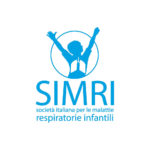
Asthma should not be diagnosed without performing spirometry.
Spirometry is the best tool for assessing lung function in asthmatic children, and allows to define the disease severity, monitor the response to pharmacological treatment and achieve symptoms control. Patient’s history and physical examination alone, not combined with spirometry results, may underestimate or overestimate asthma control. In addition to the economic burden to the Health Care System, the consequences of misdiagnosis include a delay in the diagnosis and in the start of treatment. Spirometry is recommended:• at the first assessment, in order to determine the disease severity;
• after treatment is started, during the follow-up visits in order to optimize therapy;
• when exacerbations occur;
• at least every 1-2 years in cases with intermittent asthma. The response to bronchodilator should be carried out regularly.
Spirometry can be achieved in children as young as five years if criteria for acceptability are satisfied.
Sources
1. Global Strategy for Asthma Management and Prevention (GINA), 2016 update. www.ginasthma.org
2. Miller MR et al. ATS/ERS Task Force - Standardisation of spirometry. Eur Respir J. 2005 Aug; 26 (2): 319-38.
3. Moeller A et al. ERS Task Force Monitoring Asthma in Children - Monitoring asthma in childhood: lung function, bronchial responsiveness and inflammation. Eur Respir Rev. 2015 Jun; 24 (136): 204-15.
4. National Asthma Education and Prevention Expert Panel Report 3: Guidelines for the diagnosis and Management of Asthma. NIH Publication Number 08-5846 October 2007. http://www.nhlbi.nih.gov/files/docs/guidelines/asthsumm.pdf
Attention. Please note that these items are provided only for information and are not intended as a substitute for consultation with a clinician. Patients with any specific questions about the items on this list or their individual situation should consult their clinician.


Recent Comments